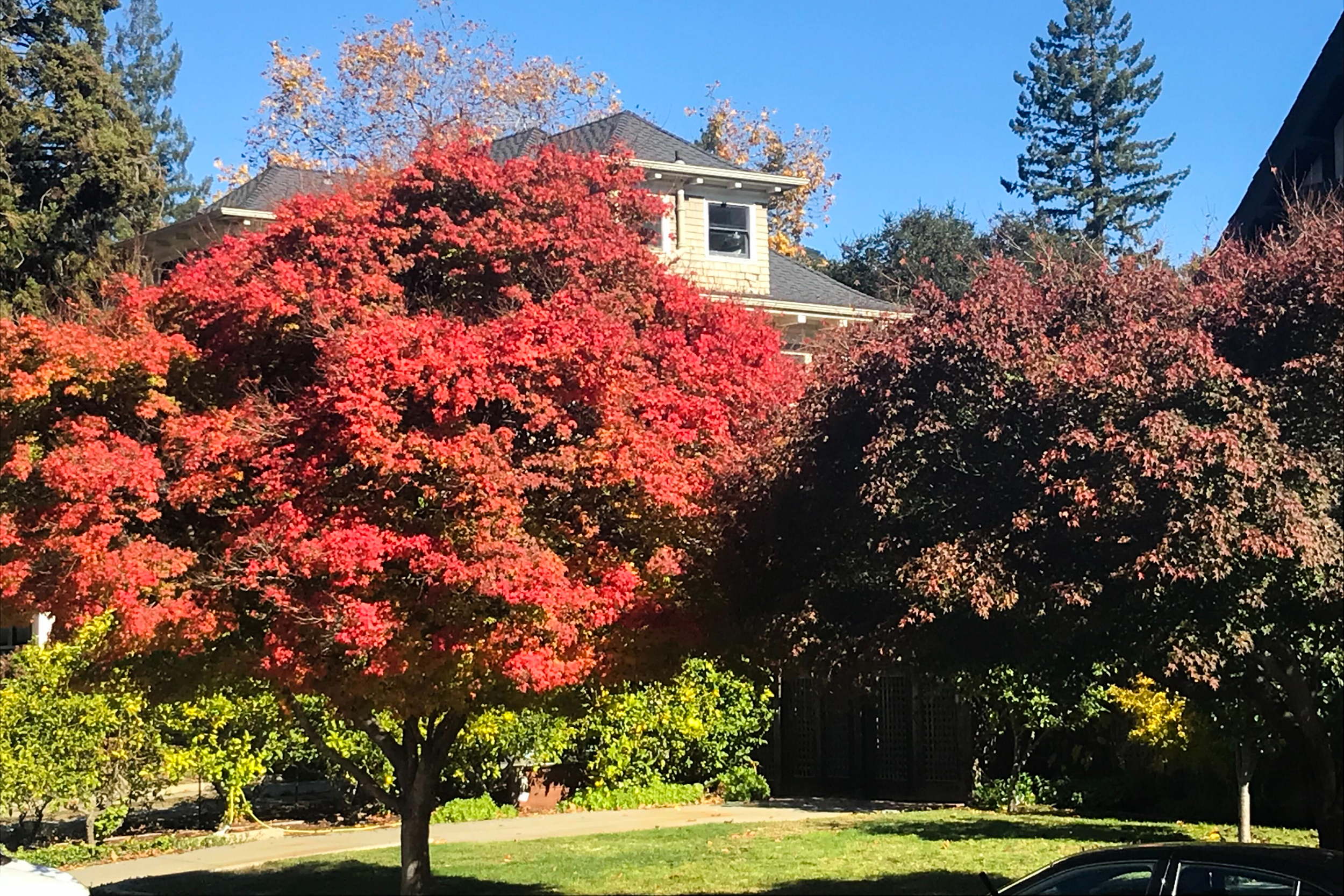Growing up in Pennsylvania, I’d look forward to the spectacular display of fall colors every year, when the mountains surrounding me would turn striking shades of scarlet and goldenrod.
I soon learned that nature didn’t paint the same landscape in my adopted city of San Francisco, which led me to wonder: Why?
It turns out there are two main reasons for our perpetually verdant palette. One is obvious; one is more subtle. Neither has anything to do with Karl the Fog.
The trees in San Francisco are mostly evergreen, not deciduous, meaning they don’t drop their leaves and—as their name implies—always stay green.
The confusion seems to arise from the fact that so many of our trees are broadleaf evergreens, which people can mix up with deciduous trees.
“We don’t just have conifers and pines,” said Peter Brastow, senior biodiversity specialist in San Francisco’s Environment Department. “A lot of our native trees are broadleaf evergreens, like other Mediterranean climates.”
Coast live oaks, bay laurels and the eucalyptus that dot Mount Davidson and Mount Sutro are all broadleaf evergreens, for example.
Thankfully, those of us craving fall colors don’t have to travel all the way to the East Coast to get our fix. Deciduous trees like the bigleaf maple and California buckeye are in abundance in the East Bay and on the Peninsula.
Yet, while such classically autumnal hues can be found throughout the larger Bay Area and California, they never seem to match the jaw-dropping splendor of a mountainside in upstate New York.
There’s a reason for that, too, according to Brastow. “Even the deciduous trees we do have don’t get the dramatic change, and that’s because of the temperature differential,” he said, noting that our coastal climate does not produce drastic dips in temperature. “You need to have it quite cold in the fall to achieve those colors.”
“It’s a really interesting ecological, climatological phenomenon,” Brastow said.
